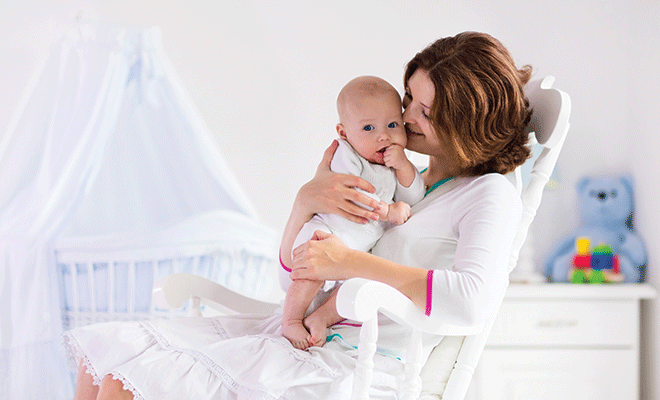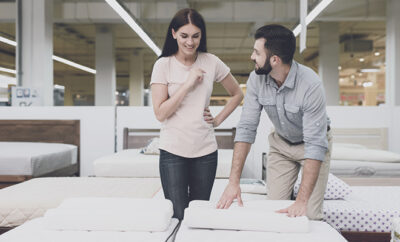
Welcoming your baby
Setting up your baby’s nursery can be an exciting part of the parenting experience, and there are plenty of fun and beautiful options for creating the perfect space for your baby. Just remember that what you and your baby need is a comfortable, uncluttered room where everything you need is quickly accessible.
The list of basic furnishings for a nursery isn’t extensive. Your baby needs somewhere to sleep; you need somewhere to store your baby’s clothes, toys and accessories; and you need a place to change your baby. It sounds simple enough, but there are a myriad of choices to consider as well as safety guidelines. A baby is defenseless, so the nursery must be one of the safest rooms in the house.
Here are a few tips to help you get started.
Bassinet, cradle or crib?
The most important piece of furniture for the nursery is a bed. The type of bed you choose should be based on where you want your newborn to sleep. A bassinet or cradle, which is smaller and more portable than a crib, is a good choice if you want your baby to sleep near your bed in the first few days or weeks. Another advantage of a bassinet or cradle, especially for mothers recovering from childbirth, is that it’s easier to get to your baby because the sides are lower than a crib’s. Many parents also feel that a small bassinet or cradle is cozier for a newborn baby.
Bassinets and cradles aren’t stable enough for babies who are old enough to turn over or sit up, so you’ll need to switch to a crib after a few weeks. This is why some parents begin with a crib in the first place. A crib can be used for several years, until your baby is a toddler and ready for a regular bed, so it’s worth investing in a sturdy model that meets all the current governmental safety standards.
Getting a secondhand crib from a friend or relative is a great way to pass along an heirloom, but make sure it is no older than ten years to ensure that it meets current safety standards and is in good repair. For the most current safety guidelines for cribs, visit the U.S. Consumer Product Safety Commission’s Crib Information Center.
Changing table
A changing table is a nursery necessity for some parents, while others get along fine without it. Consider that you’ll be changing hundreds of diapers for your baby, and hundreds more if you have additional children. A changing table can make the job a bit easier and save some of the stress on your back.
The American Academy of Pediatrics recommends that changing tables have a guardrail at least two inches tall on all four sides of the changing surface. The table should have sturdy legs and not feel unstable when wiggled. The best changing tables have shelves or baskets for storage so you can centralize all your changing supplies along with some clean outfits.
Nursery storage
You’ll find that your tiny baby requires several changes of clothing per day, and that means you need lots of storage space for clothing. You also may need to store clothes in larger sizes that your baby won’t be wearing for many months. The key to nursery storage is to sort and label size or season, and to store everything so you can find it when you need it.
The average bedroom closet or dresser is not well suited for storing baby clothes and accessories. Fortunately, there are all kinds of boxes, baskets and organizers available to help create the perfect nursery storage system. Look for ideas at ContainerStore.com, HGTV.com, Houzz.com and Pinterest. Babies are really good at generating laundry, so make room in your nursery for a laundry hamper or basket. Place it near the changing table, along with some type of diaper disposal system.
If you have room, you may want to include a rocker, overstuffed chair or daybed to add a touch of luxe and elegance. This will give you a comfortable place for feeding your baby, cuddling and reading bedtime stories.
Making it personal
Once you’ve covered the nursery basics, you can add some creativity to make the space personal and special for your family. Give nursery furniture a unique touch with a new coat of paint. Hang framed photos and colorful art on the walls to give your baby something to look at, or paint a custom mural on the wall. Use enlarged photos of family or your travels or pages taken from classic picture books. Babies don’t need many toys (those will come later), but you can hang a colorful mobile over the crib to entertain your baby. HLM
Sources: aap.org, cpsc.gov, pregnancy.org, parenting.com, babble.com and HGTV.com.







